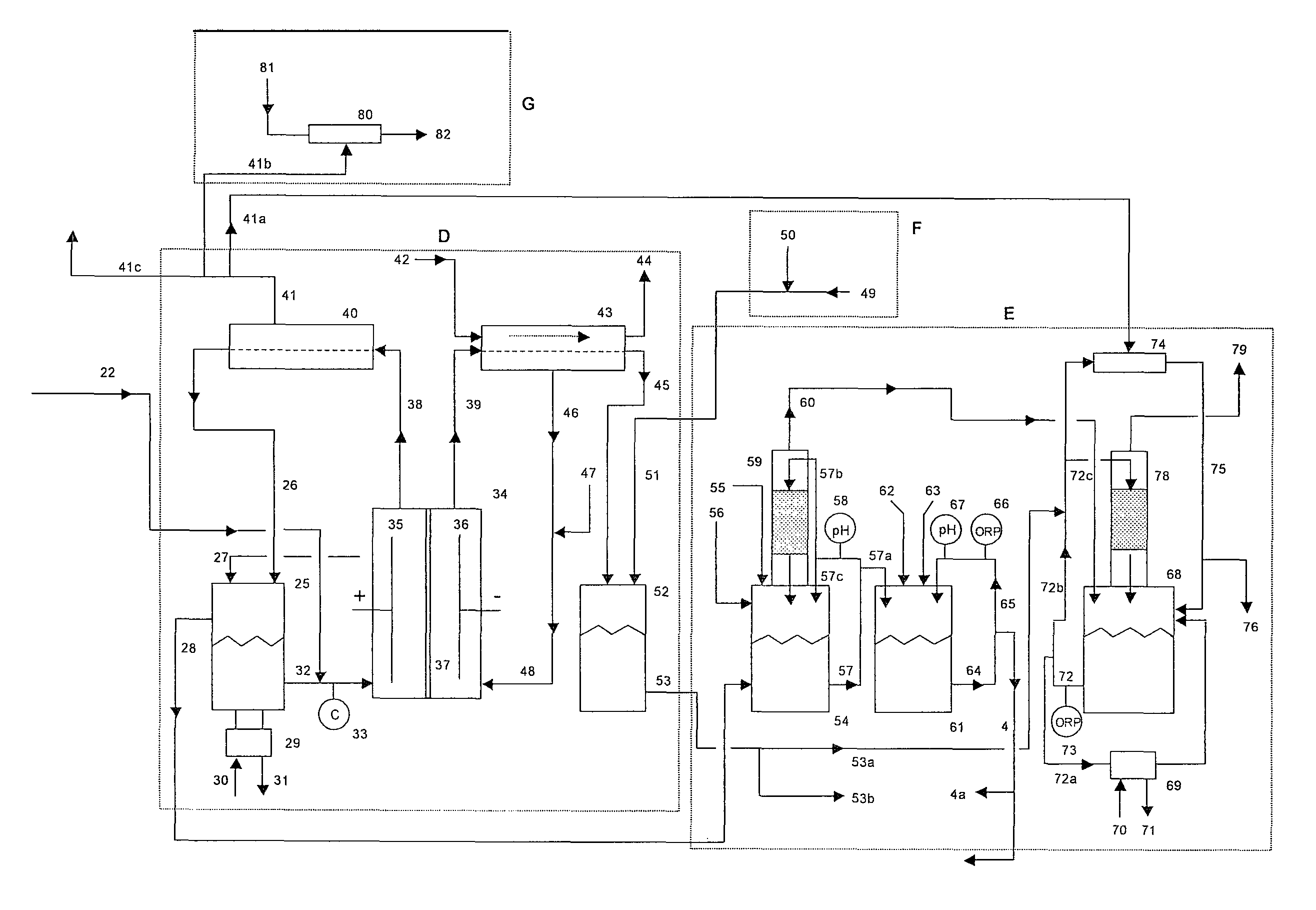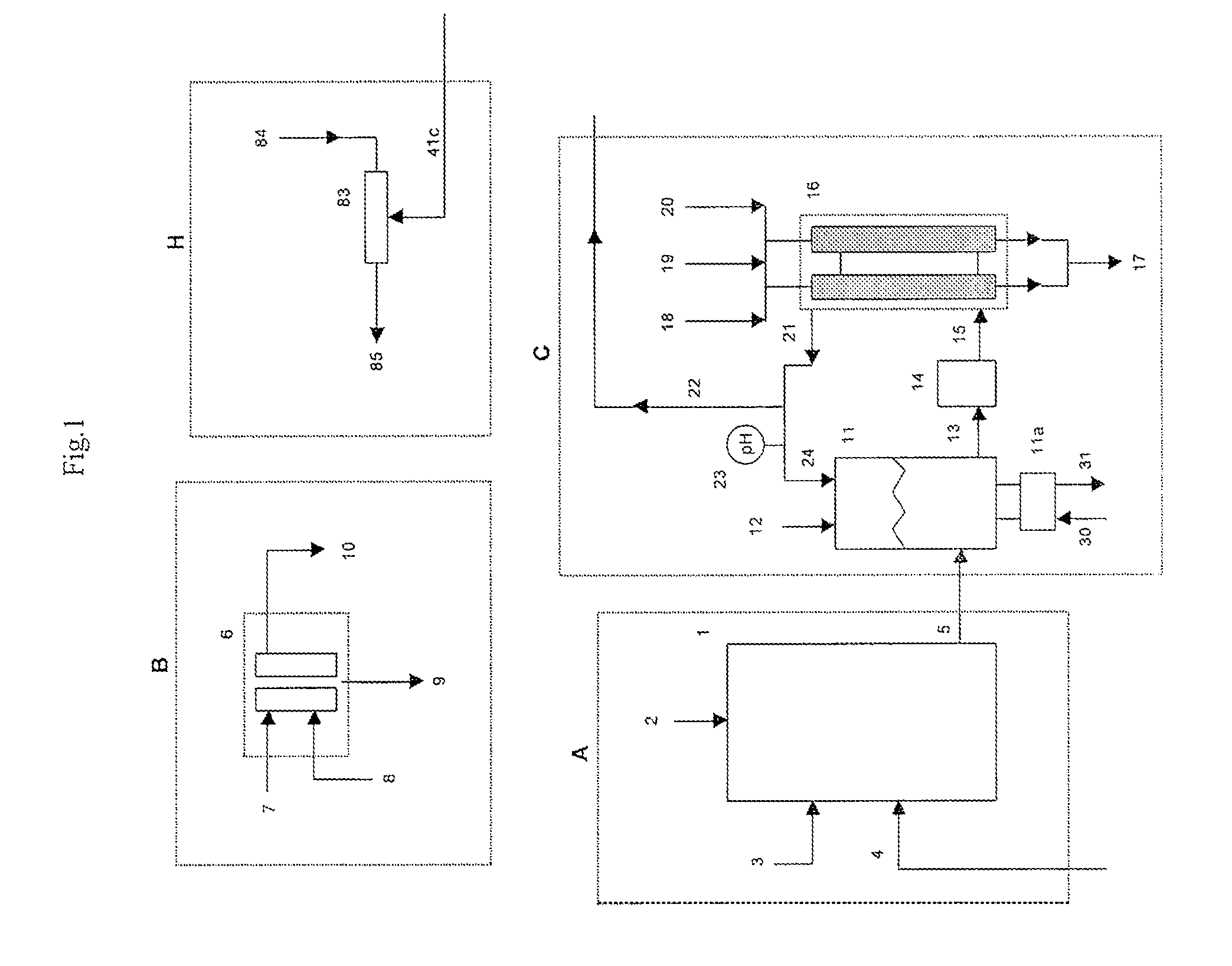Process for the on-site production of chlorine and high strength sodium hypochlorite
a sodium hypochlorite and chlorine technology, applied in the field of onsite production of chlorine and high strength sodium hypochlorite, can solve the problems of unintentional and sometimes fatal release of pressurized elemental chlorine gas, on-site storage of pressurized elemental chlorine liquid/gas requires costly facilities modifications, and the quantity of storage required for the dilute solution product is not enough, so as to achieve efficient reduction of hardness of saturated sodium chloride brine solution, high strength, and high strength
- Summary
- Abstract
- Description
- Claims
- Application Information
AI Technical Summary
Benefits of technology
Problems solved by technology
Method used
Image
Examples
example 1
[0058]Sodium Hypochlorite System with 1500 Gallon / Day Production Capacity
[0059]A 1500 lb / day equivalent chlorine system was designed and constructed with a capacity to supply 1500 gallons per day of 12.5% “trade” sodium hypochlorite (125 gm / L as NaOCl) for a water treatment plant. The electrolyzer module consisted of six membrane cell electrolyzers having five cells per electrolyzer and isolation valves on each electrolyzer inlet and outlet lines for isolation control. The electrolyzers were prepared utilizing DuPont Nafion brand N324 cation ion exchange membranes, anodes with an EC-521 anode coating on titanium substrate from Eltech Systems Corporation (Chardon, Ohio), and ASTM grade 316 stainless steel electrodes as cathodes.
[0060]The system was designed with the brine treatment system containing two Bayer A.G. trademark brand Lewatit TP208 chelating ion exchange resin columns having a recirculating flow through each column of 6 GPM producing a softened brine having a consistent t...
example 2
[0065]Chlorine System with 750 lb / Day Production Capacity
[0066]A similar chlorine system as in Example 1 was constructed as a demonstration for a potable water treatment plant requiring chlorine gas as the treatment chemical. The system consisted of only four (4) electrolyzers with five (5) cells per electrolyzer with a capacity of 750 lbs / day of elemental chlorine gas. The same brine softening module and sodium hypochlorite conversion module was used. The only chlorine distributed to the sodium hypochlorite conversion unit was the amount that was stripped from the depleted brine.
[0067]The system produced elemental chlorine gas, which was educted into one of the solution streams at the potable water treatment plant at a variable rate to achieve and maintain chlorine residual level of 0.75 to 1 ppm chlorine. The actual chlorine production rate was manually adjusted at this installation site by changing the rectifier DC current to the electrolyzers, which was determined to be proporti...
PUM
| Property | Measurement | Unit |
|---|---|---|
| temperatures | aaaaa | aaaaa |
| pH | aaaaa | aaaaa |
| current efficiencies | aaaaa | aaaaa |
Abstract
Description
Claims
Application Information
 Login to View More
Login to View More - R&D
- Intellectual Property
- Life Sciences
- Materials
- Tech Scout
- Unparalleled Data Quality
- Higher Quality Content
- 60% Fewer Hallucinations
Browse by: Latest US Patents, China's latest patents, Technical Efficacy Thesaurus, Application Domain, Technology Topic, Popular Technical Reports.
© 2025 PatSnap. All rights reserved.Legal|Privacy policy|Modern Slavery Act Transparency Statement|Sitemap|About US| Contact US: help@patsnap.com



